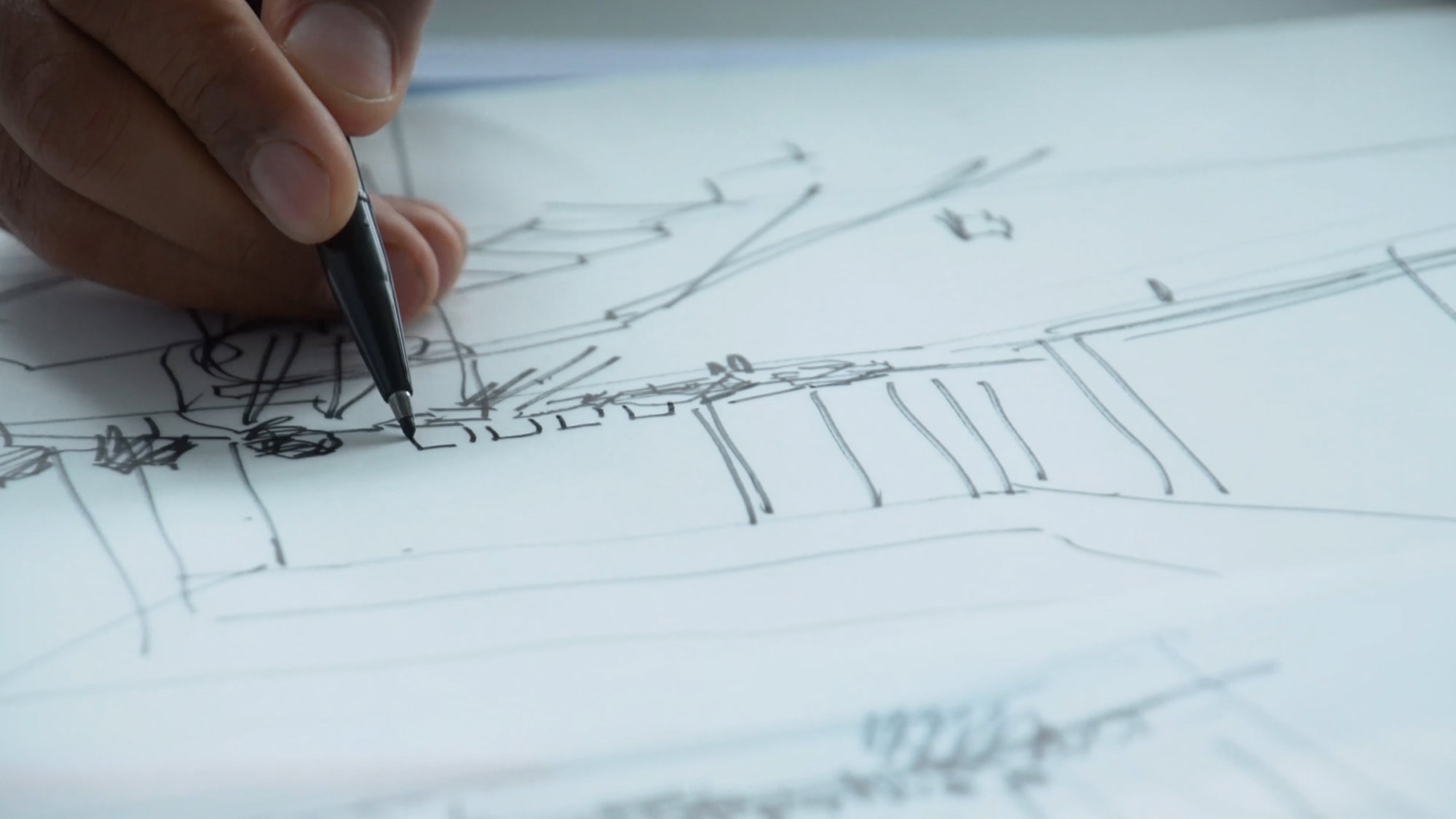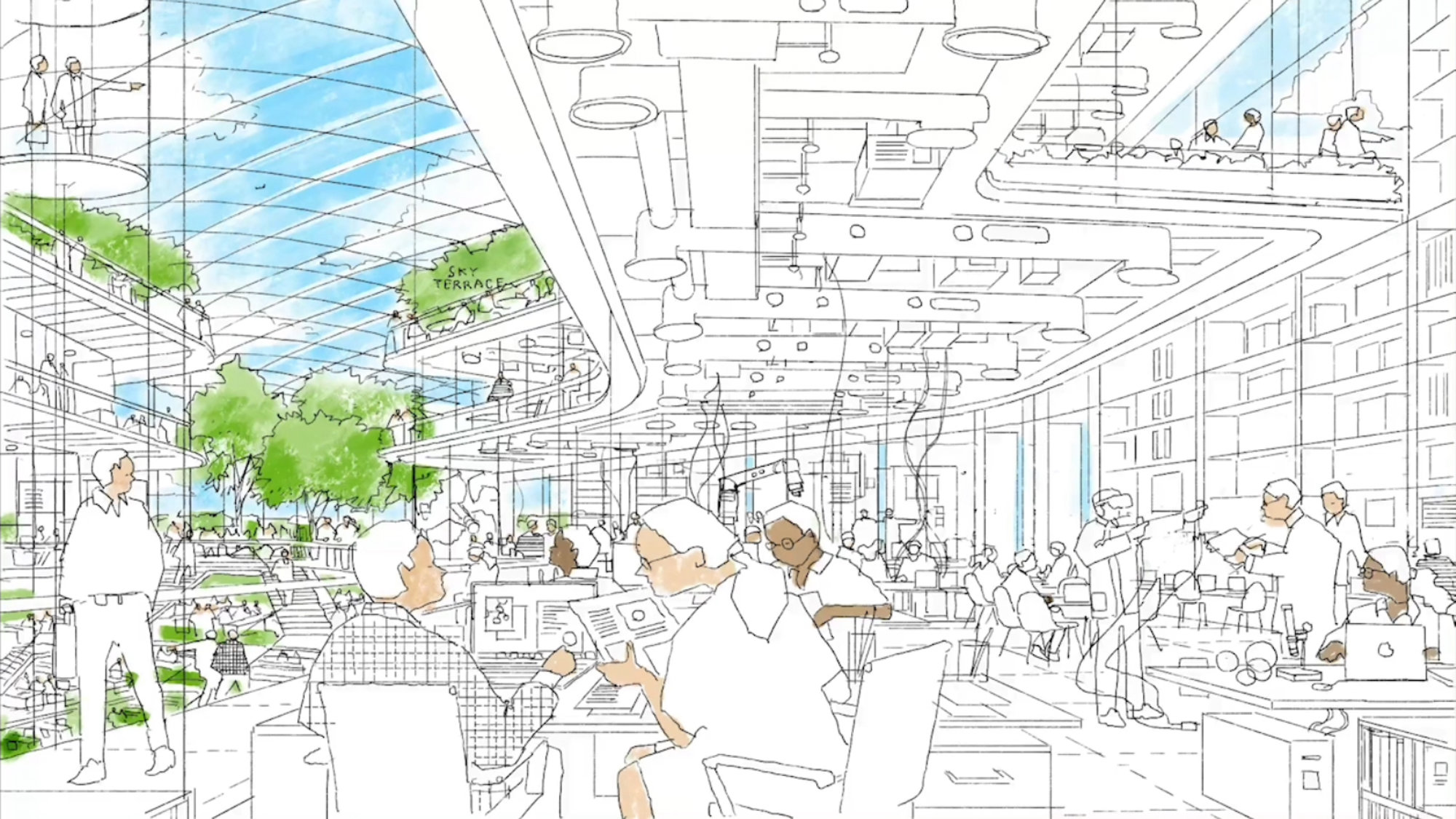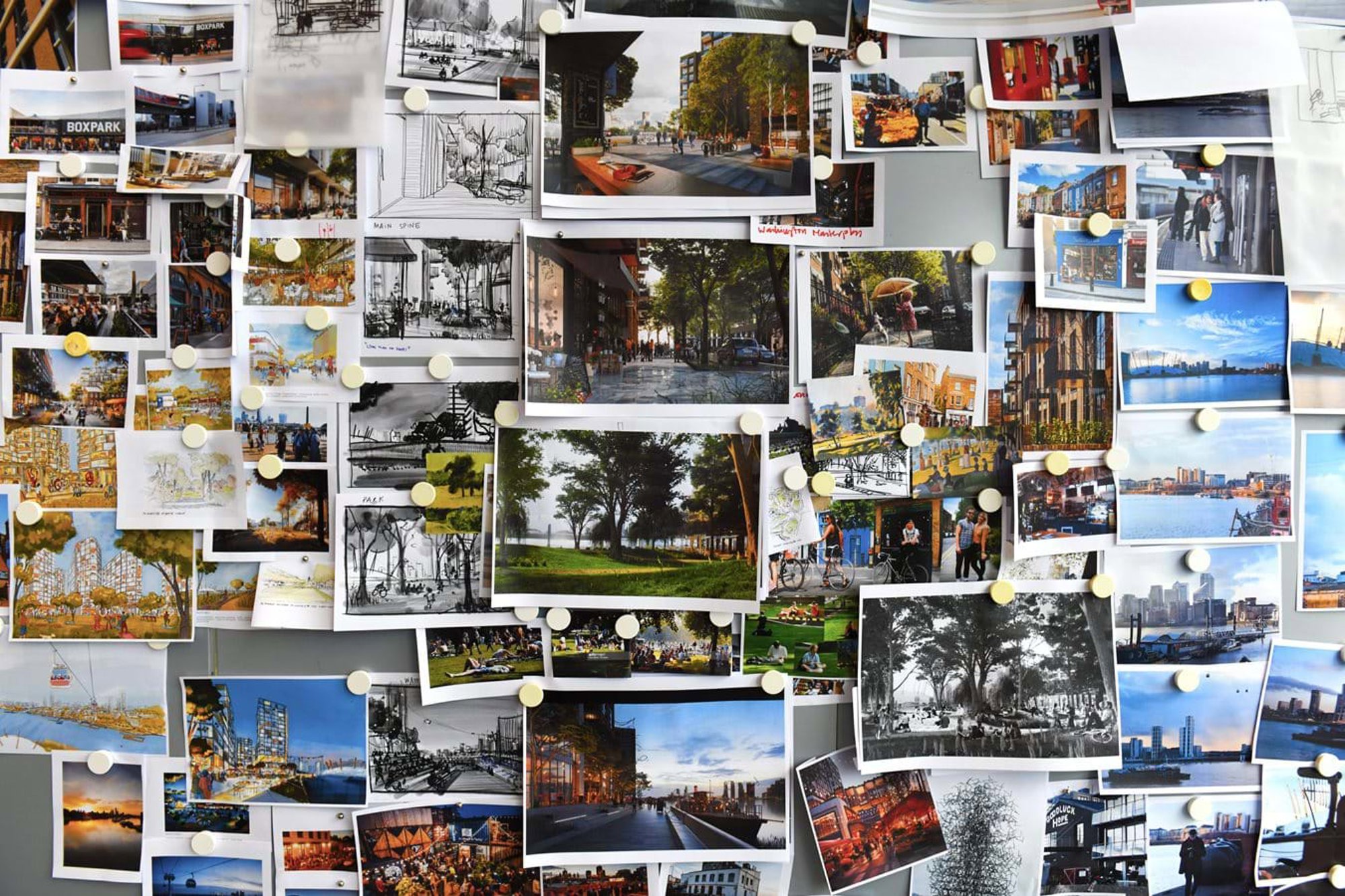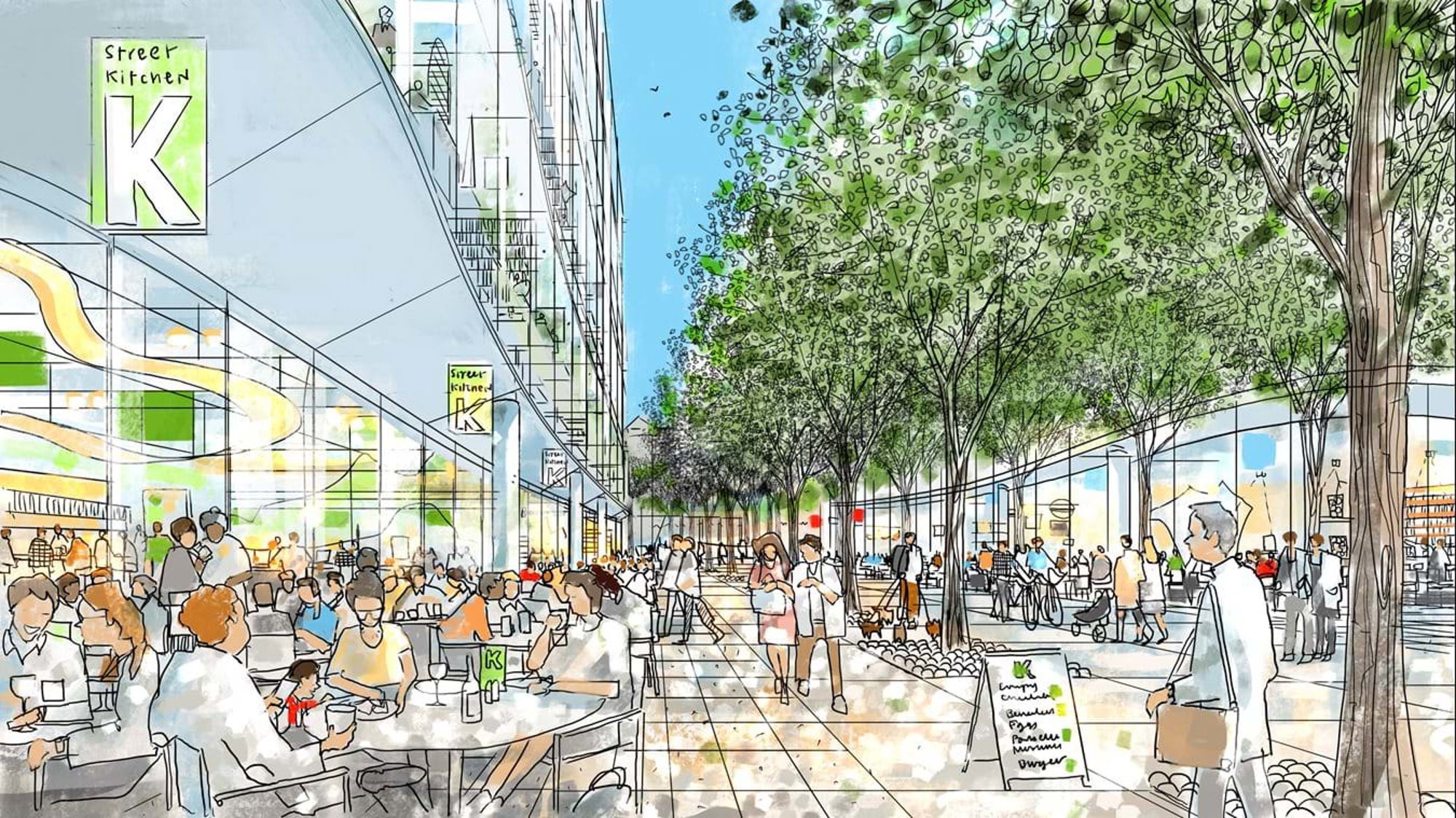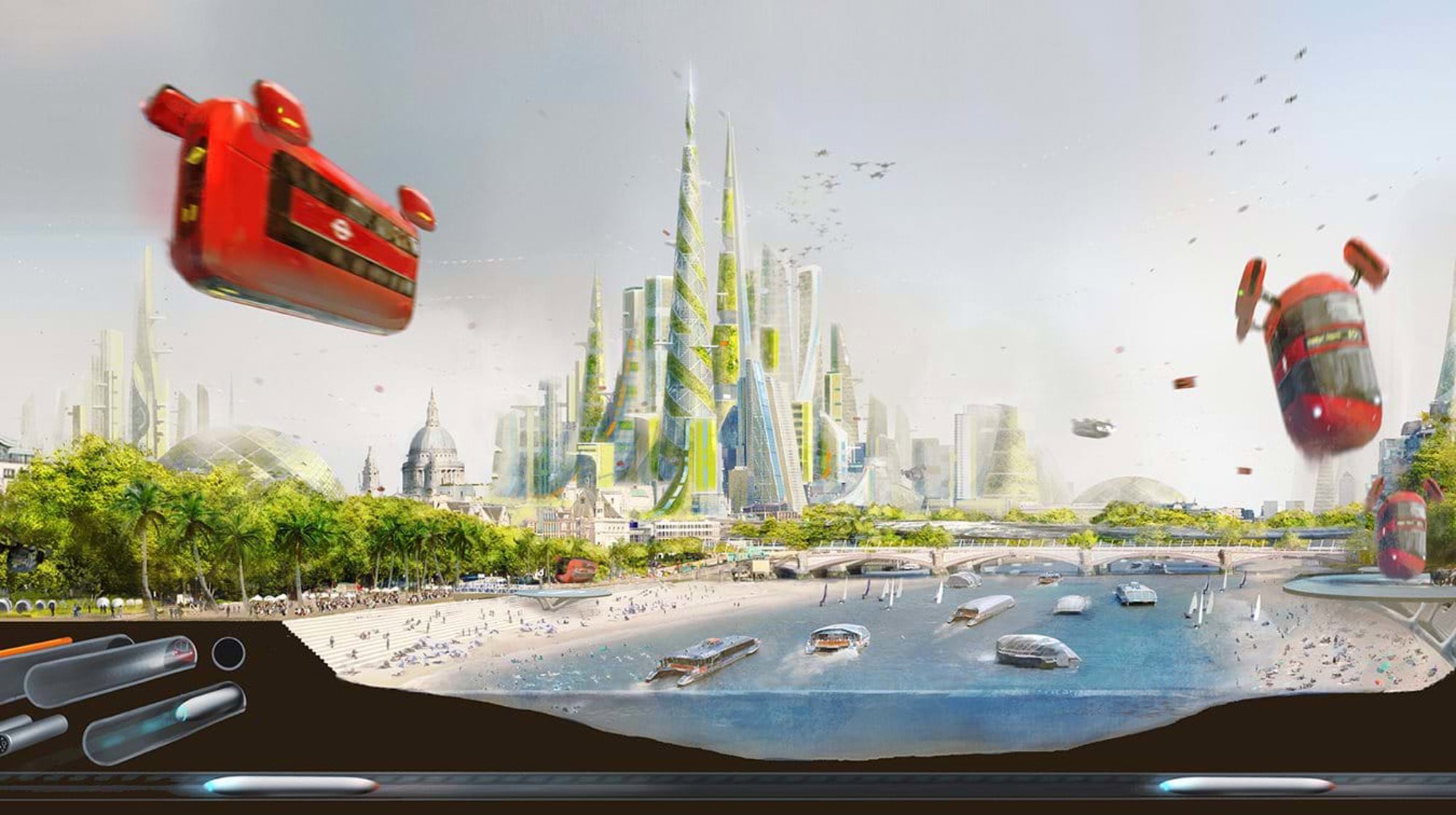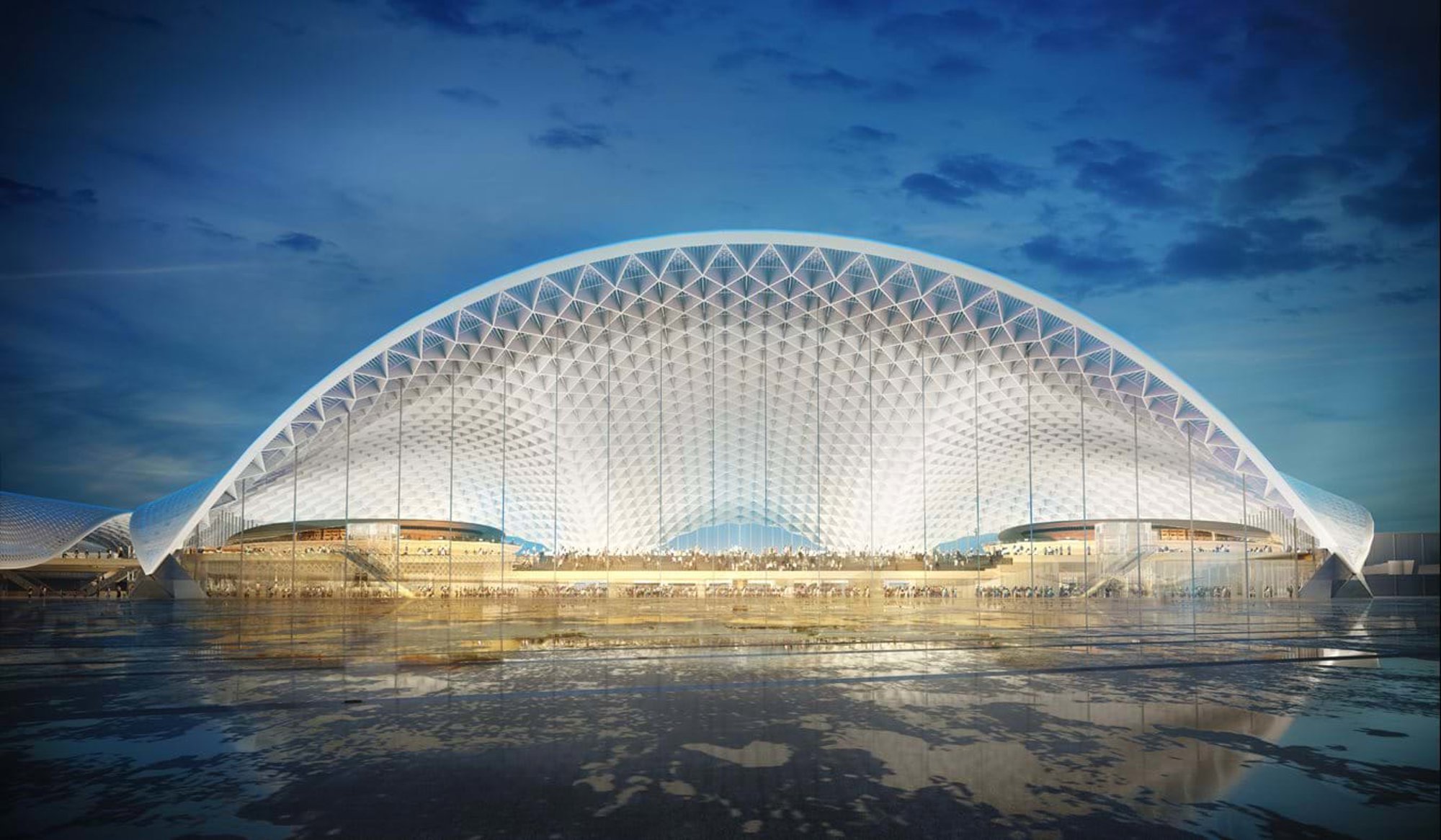The Design Communications team is responsible for the creation of visual artwork for all projects from sketches through to photorealistic imagery. Playing a key part in the explorative design process, the team creates and designs artworks that illustrate the complex relationships within the built environment with a strong focus on storytelling.
Design Communications
Research and site photography
Early research allows the team to communicate spatial, experiential, sensory and emotional ideas through the eyes of the people who encounter the buildings and spaces. Gathering references from movies, paintings, architecture, food and cultural traditions enables artists to invoke the right mood and emotions in their artwork. Site visits and location-specific photo shoots help understand places and the life within to lend the correct flavour to the images.
Storyboarding and hand drawn art
Work starts with the storyboarding process rapid sketches emerge from conversations with clients. The team uses these drawings to listen, question and propose thoughts early in the design process. The artists are encouraged to see people as protagonists and key compositional elements within their work. Experiential drawing and hand sketches are an early opportunity to visualise how the design looks and the opportunities that lie ahead.
Concept art
Concept artwork combines hand-drawn and painted artwork with digital software. The team is able to rapidly imagine massing and environments with early ideas about composition, atmosphere and emotion. The speed of this technique engages clients in the process of what the design feels like.
Photoreal art
Digital processes are used to model, texture and render environments three-dimensionally, combining photorealism with carefully selected atmospherics. Artists create stories that showcase textures and materiality of the design and how they contribute to the actual experience of the space. Photorealism brings out the finer details of the design with clients, allowing them to imagine a future beyond.









